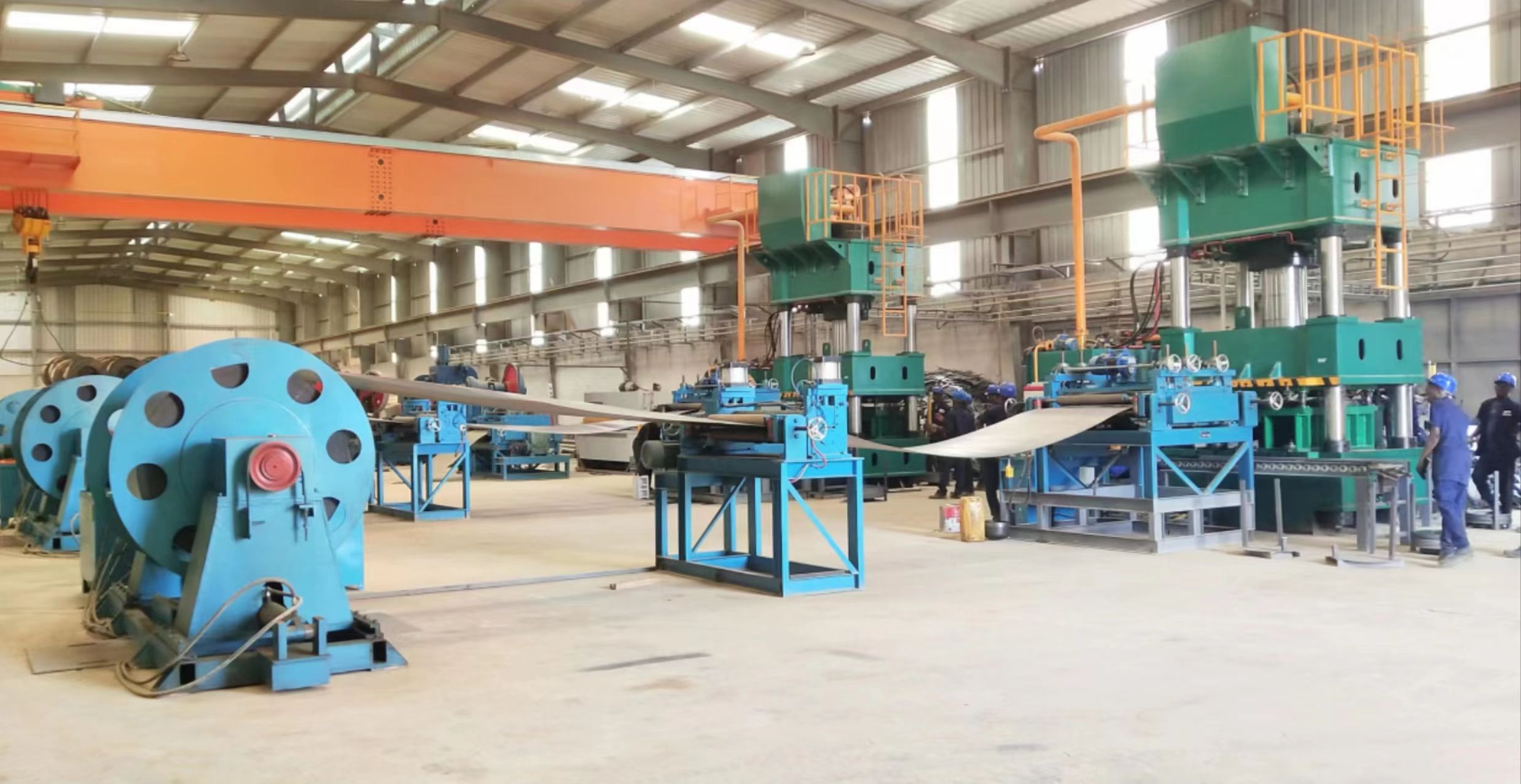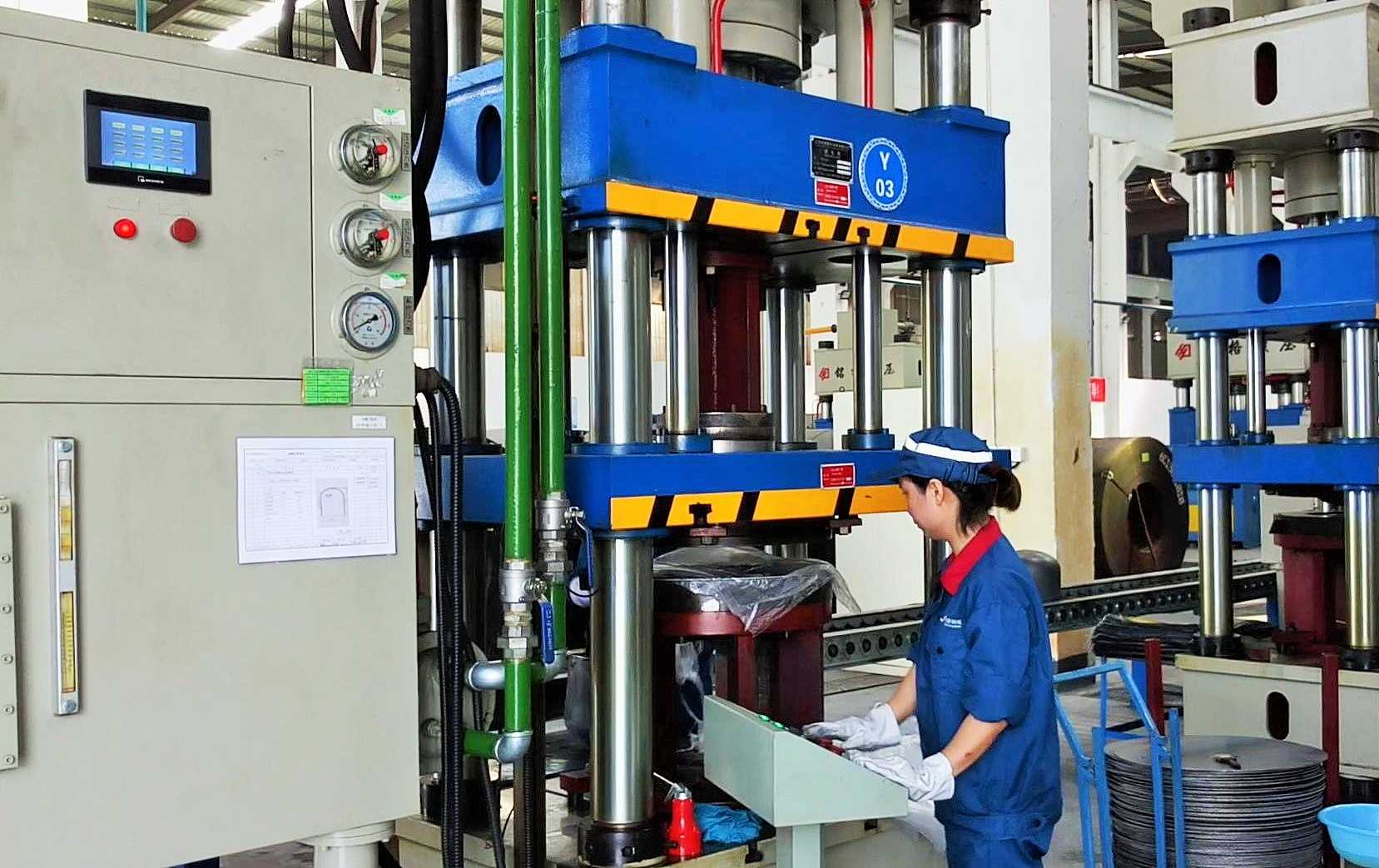Introduction
In the ever-evolving landscape of industrial automation, efficiency and safety are paramount. The handling of Liquefied Petroleum Gas (LPG) cylinder valves is a critical operation in many industries, including energy, manufacturing, and logistics. Traditional methods of loading and unloading these valves are often labor-intensive, time-consuming, and prone to human error. Enter the Angle Valve Unloading Machine, a technological marvel designed to revolutionize this essential task. This article delves into the intricacies of these machines, their applications, benefits, and the transformative impact they have on LPG valve operations.
The Basics of LPG Cylinder Valve Operations
LPG cylinders are widely used for domestic, commercial, and industrial purposes. These cylinders are equipped with valves that control the flow of gas, ensuring safety and functionality. Handling these valves requires precision and care, as any mishandling can lead to leaks or accidents. Traditionally, the process of loading and unloading LPG valves involves manual labor, which is not only inefficient but also risky.
Challenges in Traditional Methods
Manual handling of LPG valves comes with several challenges:
- Safety Risks: The risk of accidents due to human error is significant. Improper handling can lead to hazardous gas leaks.
- Labor Intensity: The manual process is labor-intensive, requiring significant manpower and leading to worker fatigue.
- Inconsistency: Human involvement introduces variability in the process, resulting in inconsistent performance and potential damage to valves.
- Time Consumption: Manual operations are time-consuming, leading to lower productivity and higher operational costs.
Introduction to Angle Valve Unloading Machines
Angle Valve Unloading Machines are automated systems designed to handle the loading and unloading of LPG cylinder valves with precision and efficiency. These machines utilize advanced technology to ensure safe and consistent handling of valves, significantly reducing the risks and inefficiencies associated with manual methods.
Key Components and Working Principle
- Robotic Arms: Equipped with precision tools, robotic arms handle the valves, ensuring accurate placement and removal without causing damage.
- Sensors and Cameras: Advanced sensors and cameras provide real-time feedback, allowing the system to make adjustments and ensure precise operations.
- Control System: A sophisticated control system manages the entire operation, coordinating the movements of robotic arms and processing data from sensors.
- Safety Mechanisms: Built-in safety features detect anomalies and halt operations to prevent accidents.
How It Works
The machine operates through a series of well-coordinated steps:
- Loading Phase: Valves are loaded into the machine’s designated area.
- Inspection Phase: Sensors and cameras inspect the valves for any defects or irregularities.
- Unloading Phase: Robotic arms carefully unload the valves from cylinders.
- Sorting Phase: Valves are sorted based on predefined criteria and transported to the next stage of the process.
Benefits of Using Angle Valve Unloading Machines
The adoption of residual liquid separator machines offers numerous benefits that address the challenges of traditional methods.
Enhanced Safety
Automating the valve handling process significantly reduces the risk of human error. The precise movements of robotic arms and the real-time feedback from sensors ensure that valves are handled safely, minimizing the risk of leaks and accidents. Additionally, built-in safety mechanisms detect and respond to potential issues before they escalate.
Increased Efficiency
Angle Valve Unloading Machines can operate continuously without fatigue, leading to higher productivity. The automation of repetitive tasks frees up human workers to focus on more complex and value-added activities. As a result, operations become more streamlined, and output increases.
Consistency and Precision
Automation ensures that every valve is handled with the same level of precision, eliminating the variability associated with manual labor. This consistency enhances the overall quality of the operation and reduces the likelihood of valve damage.
Cost Savings
While the initial investment in Angle Valve Unloading Machines may be significant, the long-term cost savings are substantial. Reduced labor costs, increased productivity, and minimized risks translate into lower operational expenses. Additionally, the reduction in valve damage and accidents leads to further cost savings.
Improved Worker Satisfaction
By automating the most labor-intensive and hazardous tasks, workers are relieved from physically demanding and potentially dangerous duties. This improvement in working conditions can lead to higher job satisfaction and better retention rates.
unloading-valve-machine-103x300.jpg)
Applications of Angle Valve Unloading Machines
Residual liquid separator machines have a wide range of applications across various industries that rely on LPG cylinders.
Energy Sector
In the energy sector, where LPG is a crucial component, the safe and efficient handling of cylinder valves is paramount. Angle Valve Unloading Machines enhance operational safety and efficiency, ensuring a steady supply of LPG to meet energy demands.
Manufacturing Industry
Manufacturing processes often involve the use of LPG for heating, cutting, and other applications. The integration of residual liquid separator machines in manufacturing plants ensures that the supply of LPG is uninterrupted and handled safely, contributing to overall operational efficiency.
Logistics and Distribution
The logistics and distribution sector relies on the timely delivery of LPG cylinders to various locations. Angle Valve Unloading Machines streamline the handling process, reducing loading and unloading times and ensuring that cylinders are delivered safely and on schedule.
Commercial and Residential Use
For commercial and residential users, the safe handling of LPG cylinders is crucial to prevent accidents. Residual liquid separator machines ensure that cylinders are equipped with functional and safely handled valves, providing peace of mind to end-users.
Case Studies: Success Stories of Angle Valve Unloading Machines
Case Study 1: Energy Sector
An energy company operating a large LPG distribution network integrated residual liquid separator machines into their operations. The results were remarkable: a 50% reduction in valve handling time, a 30% decrease in operational costs, and a significant improvement in safety records. The automation allowed the company to meet increasing demand without compromising on safety or efficiency.
Case Study 2: Manufacturing Industry
A manufacturing plant specializing in metal fabrication adopted residual liquid separator machines to handle LPG cylinders used in cutting and welding processes. The machines not only streamlined operations but also reduced valve damage by 40%. The consistency and precision of the automated system improved the overall quality of the manufacturing process.
Case Study 3: Logistics and Distribution
A logistics company managing the distribution of LPG cylinders across multiple regions implemented Angle Valve Unloading Machines to enhance their loading and unloading operations. The result was a 60% reduction in loading times and a notable increase in delivery punctuality. The automation also reduced the risk of accidents during handling, enhancing the safety of their operations.
Future Trends and Innovations
The field of industrial automation is continuously evolving, and residual liquid separator machines are no exception. Future trends and innovations are expected to further enhance their capabilities and applications.
Integration with IoT and AI
The integration of the Internet of Things (IoT) and Artificial Intelligence (AI) technologies will enable residual liquid separator machines to become smarter and more efficient. IoT devices can provide real-time data on valve conditions and machine performance, allowing for predictive maintenance and further reducing downtime. AI algorithms can optimize operations, improving efficiency and precision.
Enhanced Safety Features
Future developments will likely focus on enhancing the safety features of Angle Valve Unloading Machines. Advanced sensors and AI-powered anomaly detection systems will make these machines even more reliable, further minimizing the risk of accidents.
Increased Customization
Manufacturers are expected to offer more customizable options to meet the specific needs of different industries. This customization will allow companies to tailor the machines to their unique operational requirements, maximizing their benefits.
Green Technology
As industries move towards more sustainable practices, the development of eco-friendly Angle Valve Unloading Machines will gain traction. These machines will be designed to minimize energy consumption and reduce the carbon footprint of operations.
Conclusion
Angle Valve Unloading Machines represent a significant advancement in the automation of LPG valve operations. Their ability to enhance safety, increase efficiency, and provide consistent performance makes them invaluable in various industries. As technology continues to evolve, these machines will become even more sophisticated, further transforming the landscape of industrial automation.
Investing in residual liquid separator machines is not just a step towards modernization; it is a commitment to safety, efficiency, and the future of industrial operations. With their proven benefits and the promise of future innovations, these machines are set to become an integral part of LPG valve handling processes worldwide.




